7/31/2025
Perennials Section: Bulking Best Practices for Perennial Growers
ThinkPlants Team (Anik Graves, Zoltan Kovacs & Joey Wisema
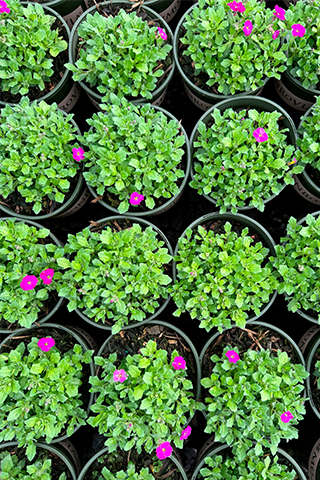
Longer bulking periods have been shown to increase stem count, flower bud counts and improve the evenness of perennial crops. It used to be that most perennials were grown a full season prior to retail sale due to older genetics being slower to grow and requiring some amount of cooling and vernalization in order to flower consistently. Many crops are still overwintered in this fashion, including popular items such as astilbe, hosta, hemerocallis and Helleborus. Alpine varieties such as saxifraga, iberis and aubretia similarly require bulking and vernalizing in order to flower in the spring.
Aubretia Axcent grown from pre-vernalized 32-cell liners.
With newer breeding focusing on first-year flowering (FYF) and shorter crop times, the necessity of vernalizing perennials has dropped considerably and the bulking period is often shortened. These shorter crop times don’t eliminate the importance of the bulking period, though. Bulking occurs faster and in the same season as flowering, giving you less time to correct issues in your crops.
PlanningIn order to plan your bulking period, you need to determine which category your perennials fall into: slower crops (such as lithodora, saxifraga, aubretia, etc.) that require bulking and cooling in order to grow a full-size, retail-ready plant, and short crops (such as coreopsis, gaillardia, salvia, etc.) that are first-year flowering and can be grown in one season.
Slower crops follow a more traditional growing schedule where transplanting occurs in late summer or fall. Determining your ideal planting date is very important. As usual, you can work back from your target sell date with the finish time, vernalization time and bulking time to find your transplant date.
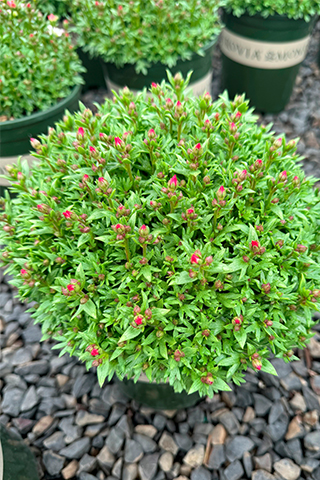
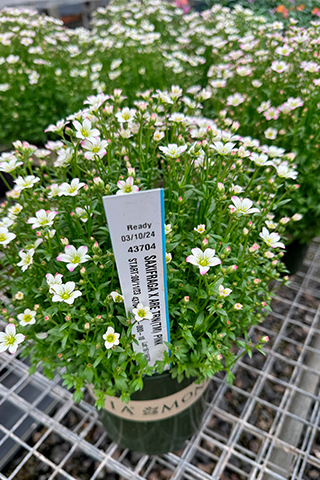
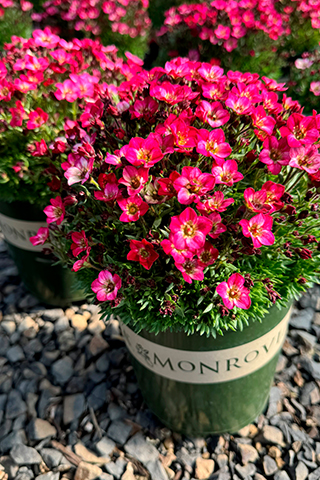 Saxifraga Touran perfectly bulked through the winter and ready for full bloom in the spring.
Saxifraga Touran perfectly bulked through the winter and ready for full bloom in the spring.
For example, with this Aubretia Axcent guide from Syngenta Flowers (Figure 1), a target sell date of Week 15 in 2026 would suggest a transplant date of Week 47 in 2025. We always suggest adding three to four weeks to this calculation to account for unexpected weather events, especially when overwintering outdoors in an uncontrolled environment. With this schedule, an ideal transplant date would be Week 43 to 44 for a Week 15 finished crop.
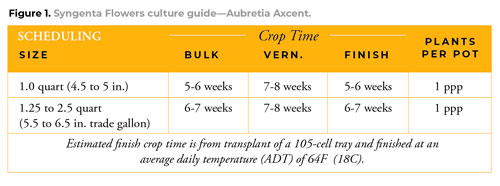
During bulking, it’s important to understand the fertilizer and EC requirements of your crop and ensure they receive the correct nutrient levels to grow and prepare themselves for winter dormancy. Proper EC levels will support vegetative growth and root development, reducing your risk of winter losses. Be sure to consult the culture guides for your perennial varieties for up-to-date breeder recommendations.
Preventative disease management during bulking will set you up for success through the winter and into spring. Consider implementing daily scouting routines during bulking to monitor for flareups of bacterial or fungal issues. These issues can be quick to spread during dormancy and are easier to treat during the bulking period. You can also consider cleaning the plants to remove dead or damaged tissue prior to dormancy and planning two to three applications of an all-purpose fungicide to help keep your plants healthy through dormancy.
If the timing on these slower perennial crops is too long for your facility to handle, there are reliable ways to shortcut this residency time. With genus that require vernalization (such as saxifraga or aubretia), you can opt to purchase larger pre-vernalized liners and transplant in the spring for same-season sales.
This principle also applies to quicker crops and FYF varieties. Opting for a larger input size, such as 20- or 30-cell liners rather than 102- or 50-cell liners, can yield a quicker-turn crop. For example, a 288-cell Digitalis Dottie plug takes 11 to 12 weeks to finish from transplant (Figure 2). By purchasing a 126-cell or 72-cell plug, you can shave weeks off of your crop time.
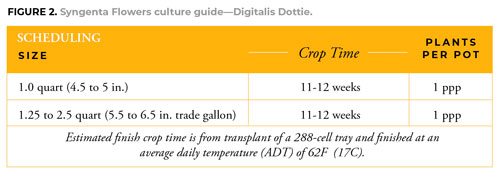
Execution
Bulking FYF crops comes with its own set of challenges. While the goal of bulking slower crops is to prepare them for dormancy, quick-turn crops require bulking time to size up the plant and establish healthy roots prior to flowering. FYF perennials, such as Coreopsis Solanna and Gaillardia Gusto, have crop times of only eight to 10 weeks from transplant to finish. This gives you a quick-turn crop, but less time in production will mean less time to assess and correct nutritional, bacterial or fungal issues before shipping.
One easy way to help support rapid plant growth during bulking is to use a lighter soil mix. Traditional, heavier perennial soil mixes aren’t suitable for faster FYF crops and may result in higher losses. Planting in lighter soil can help speed up root growth and reduce total losses.
Using soil with slow-release fertilizer is excellent for slow crops or to increase customer success in the garden, but is unnecessary for first-year flowering perennials. Whether or not your soil mix already contains slow-release fertilizer, first-year flowering perennial crops benefit from liquid fertilizer applications. This allows you to closely monitor the soil EC and tailor the applications to suit your crops, which is the best way to ensure your perennials are getting all the nutrients they need to successfully bulk and bloom on time.
Not all crops have the same electrical conductivity (EC) requirements, even within the same genus. For example, Phlox subulata performs best in 1.2 to 1.6 EC soil conditions while Phlox paniculata prefers 2.0 to 2.4 EC. (Always consult the breeder’s growing guides when crop planning.)
Greenhouse-grown crops are easier to time due to the ability to control the temperature and environment. If growing outdoors, add a few weeks of crop time to account for uncontrollable weather patterns.
Whichever type of perennials you choose to grow next season, be sure to take into account the importance of the bulking period. By ensuring that your plants are properly cared for during bulking, you’re setting yourself up for a more even, healthy finished crop come spring. GT